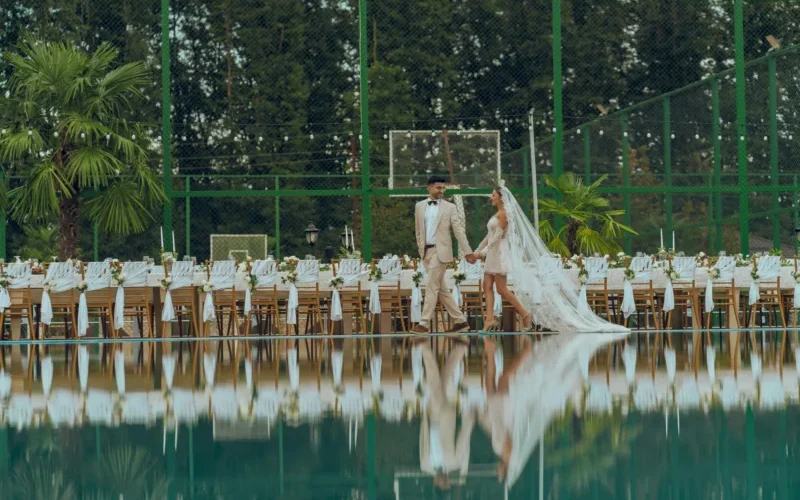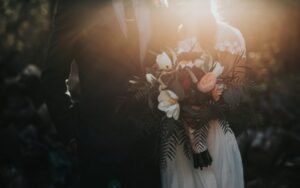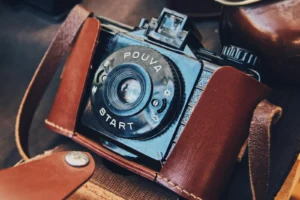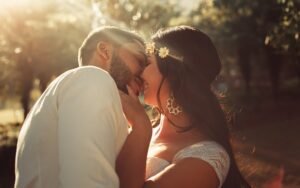Understanding Low Light Conditions
Low light conditions, especially in reception settings, pose unique challenges for photographers. The term ‘low light’ typically refers to environments where artificial lighting is minimal, such as dimly lit banquet halls, outdoor evening events, or candle-lit receptions. In such scenarios, achieving a well-exposed image can be particularly difficult due to the inherent characteristics of low luminosity. These settings affect both the camera’s performance and the quality of the images produced.
One of the primary factors in low light photography is the camera’s ISO sensitivity, which determines its ability to capture light. Higher ISO settings enable cameras to detect more light, but they also introduce noise, which can degrade the clarity of images. Striking a balance between a suitable ISO level and acceptable noise is crucial for high-quality reception shots. Additionally, the aperture, or the lens opening, significantly impacts low light performance. A wider aperture allows more light to reach the sensor, resulting in brighter images. However, wider apertures also decrease depth of field, affecting focus and the overall composition of the shot.
Another critical factor in low light photography is shutter speed. This refers to the length of time the camera’s shutter remains open to expose the sensor to light. In low light situations, slower shutter speeds are often necessary to gather enough light for a properly exposed photograph. However, using a slower shutter speed increases the likelihood of motion blur, especially in dynamic environments like receptions where guests are often moving. Thus, understanding the interplay between ISO, aperture, and shutter speed is essential for photographers striving to master low light conditions. Ultimately, a strategic approach to these elements will significantly enhance the quality of reception photographs taken in challenging lighting circumstances.
Choosing the Right Equipment
When it comes to mastering low light photography, selecting the right equipment is crucial for capturing stunning reception shots. One of the first considerations is the camera itself. Cameras that perform well in low light typically have larger sensors, allowing them to gather more light. Full-frame sensors are particularly effective, but even crop sensors can be useful if paired with the right lenses.
The choice of lens is equally essential in low light conditions. Fast lenses, characterized by wide apertures (f/1.4, f/1.8, or f/2.8), enable more light to hit the sensor, thereby improving exposure times and reducing the likelihood of motion blur. These lenses also create a shallower depth of field, allowing photographers to achieve beautiful background bokeh, enhancing the overall aesthetic of reception images.
Another important feature to evaluate is the camera’s ISO performance. A high ISO allows for brighter images in dim conditions, but it’s critical to ensure that the image quality remains acceptable at elevated sensitivity settings. Cameras with advanced noise reduction algorithms perform significantly better at higher ISOs, minimizing graininess and preserving detail.
Additionally, stabilization features can make a noticeable impact on low light photography. Optical image stabilization (OIS) within lenses or in-camera stabilization systems can drastically reduce blur from camera shake, which is especially beneficial when working without a tripod.
For added stability, incorporating a tripod or monopod can enhance your ability to capture sharp images. A tripod is preferable for static subjects, enabling longer exposure times without introducing blur, while a monopod offers portability and flexibility, allowing for quick adjustments during dynamic reception events. By carefully selecting your equipment with these factors in mind, you will be better equipped to excel in low light photography, capturing remarkable moments at receptions.
Optimizing Camera Settings
When it comes to low light photography, optimizing camera settings is paramount to capturing stunning reception shots. The three fundamental aspects to adjust are ISO, aperture, and shutter speed. Each of these elements significantly contributes to the exposure and overall quality of an image, especially in challenging lighting conditions.
Starting with ISO, this setting determines the camera’s sensitivity to light. In low light scenarios, raising the ISO can help achieve a brighter image. However, it’s essential to strike a balance since excessively high ISO levels can introduce noise, which detracts from image quality. For low light environments, a good rule of thumb is to start with an ISO setting between 800 and 1600, testing different levels to find the sweet spot for your specific conditions.
Next, consider the aperture. A wider aperture, expressed as a lower f-number (e.g., f/1.8 or f/2.8), allows more light to enter the camera, making it an ideal choice for low light situations. This setting not only brightens the image but also provides a shallow depth of field, which beautifully isolates the subject from the background. Be cautious, however, as shooting at very wide apertures may lead to less sharp focus. Therefore, choosing an aperture between f/2.8 and f/4 is often recommended for reception shots.
Lastly, shutter speed plays a critical role in controlling how motion is captured. In low light, you may be tempted to use slower shutter speeds to allow more light in; however, this can easily result in motion blur. A shutter speed of at least 1/60th of a second is advisable. If you’re shooting handheld and want to avoid blur, consider using stabilization features or a tripod. Embrace manual mode to fine-tune these settings, as it offers complete control over exposure. By meticulously adjusting ISO, aperture, and shutter speed, photographers can greatly enhance their low light photography results.
Utilizing Available Light
Mastering low light photography, particularly during receptions, often entails a keen understanding of available light sources. Instead of relying solely on flash, photographers can create stunning images by strategically utilizing ambient light, candles, and decorative fairy lights. This method not only enhances the mood of the photos but also contributes to the overall warmth of the atmosphere.
When working with ambient light, it is essential to observe how the existing light interacts with the space and subjects. Positioning subjects in relation to these light sources can dramatically impact the final image. For instance, when photographing a couple sharing a quiet moment, positioning them near a softly lit window or under fairy lights can create a beautiful glow that highlights their expressions and emotions. It’s important to consider the quality of light; soft, diffused light can create flattering shadows, while harsh light may result in an unflattering appearance.
Candles can also serve as effective light sources, offering a unique quality that evokes a sense of intimacy and warmth. When using candles, ensure that they are not too far from the subjects to illuminate their faces adequately. Additionally, the flickering nature of candle light can add an artistic element to the photographs, creating dynamic and engaging compositions.
Understanding the direction of light is crucial in low light photography. Backlighting can create a halo effect, while sidelight can enhance texture and depth. Experimenting with different angles can yield varied results, contributing to a more captivating composition. Ultimately, the key to utilizing available light lies in being adaptable, observant, and creative, allowing the inherent beauty of the setting to shine through in every shot.
Incorporating Flash and Artificial Lighting
Low light photography can often be a daunting challenge, particularly during events such as receptions where ambiance lighting plays a crucial role in setting the mood. However, understanding and effectively implementing flash and artificial lighting can significantly enhance your images. One of the first considerations when utilizing flash is timing. It is essential to determine when to activate the flash; situations involving dynamic movement or when the ambient light is particularly dim are ideal for flash usage. Using flash can help freeze motion and fill in shadows, ensuring that subjects are well-illuminated.
In addition to direct flash, bouncing or diffusing the light can create a more natural look. Attaching a softbox or umbrella to your flash can soften the intensity, producing flattering light that mimics natural daylight. Bouncing the flash off ceilings or walls also helps to distribute light more evenly across your subject, minimizing harsh shadows and contributing to a more appealing atmosphere in your photographs. Always be mindful of the color temperature to maintain a coherent mood throughout the reception.
Alternatively, artificial lighting sources such as LED panels and video lights can serve as excellent tools for low light photography. These lights can provide continuous illumination, allowing for precise control over exposure and color balance. Their versatility enables photographers to position them strategically to highlight specific areas or subjects, creating depth within the frame. Additionally, using colored gels on artificial lights can add a creative twist or thematic element, enhancing the overall aesthetic appeal of the reception photos.
In summary, mastering the art of incorporating flash and artificial lighting is vital for capturing stunning low light images. Through effective use of these tools, photographers can create memorable and impactful reception shots that truly reflect the ambiance of the occasion.
Composition Techniques for Low Light
Mastering composition in low light photography is crucial for capturing stunning reception shots. In such challenging conditions, strategic framing becomes an essential element that can significantly elevate the quality of the images. By effectively composing your shots, you can draw viewers’ attention to the subject while utilizing the ambient light to create a compelling narrative.
One fundamental technique is to embrace negative space. By allowing ample empty space around the subject, you can create a more impactful composition. This approach not only enhances the subject but also helps to convey a sense of atmosphere and mood unique to low light settings. Using negative space allows photographers to communicate feelings of isolation, intimacy, or grandeur, depending on the context of the event.
Another vital composition technique involves the use of leading lines. Lines can guide the viewer’s gaze toward the subject or through the scene. In dim lighting environments, such lines can be naturally formed by elements like tables, chairs, or pathways, thus enhancing the coherence of your images. By thoughtfully incorporating these lines into your framing, you can provide a structured, visually appealing layout that draws attention to critical elements of the composition.
Additionally, creating depth in your images is particularly valuable in low visibility conditions. Depth can be achieved by including foreground elements that frame the main subject, providing a sense of layer and three-dimensionality. This method enriches the overall composition and adds interest, allowing your audience to feel as if they are part of the scene.
Ultimately, by mastering these composition strategies—strategic framing, negative space, leading lines, and the creation of depth—photographers can produce stunning reception shots that capture the essence of the moment, even in low light conditions.
Post-Processing for Enhanced Effects
Post-processing plays a crucial role in refining low light photographs, transforming initially imperfect images into stunning visual representations. When tackling low light images, noise is often a significant concern due to the increased sensitivity required by the camera sensor in such conditions. To address this, employing noise reduction techniques can effectively minimize unwanted grain without sacrificing image detail. Many professional editing software solutions, such as Adobe Lightroom and Photoshop, provide dedicated noise reduction features that allow photographers to selectively apply adjustments for optimal results.
In addition to noise reduction, contrast enhancement is vital in low light photography. A well-executed contrast adjustment can create a dynamic range that adds depth and dimension to an image. Utilizing tools like the curves and levels adjustments within editing software enables photographers to fine-tune the highlights and shadows, creating an impactful visual narrative. This technique not only improves clarity but can also help establish a more engaging composition.
Color correction is another essential aspect of post-processing in low light photography. The presence of artificial lighting often causes color casts, which can detract from the overall quality of the images. By utilizing color balance and hue/saturation adjustments, photographers can restore the natural tones and vibrancy of the scene. Pay careful attention to skin tones; ensuring they appear natural is particularly important for portraits captured during events such as receptions.
For an efficient workflow, consider using presets and actions available in many editing programs. These tools can expedite the post-processing process, allowing for consistent results across a series of images. By understanding the fundamentals of post-processing and leveraging the right software tools, photographers can significantly enhance their low light photographs, making them not just acceptable, but truly stunning.
Common Mistakes to Avoid
Low light photography presents unique challenges that can lead to common mistakes, significantly impacting the quality of reception shots. One of the most prevalent errors is underexposure, where images appear too dark, resulting in a lack of detail. To counter this, photographers should adjust their camera settings appropriately. Utilizing a wider aperture (a lower f-stop number) can allow more light into the camera, while increasing the ISO setting can enhance sensitivity to light. However, photographers must be cautious when raising the ISO too high, as it may introduce noise, detracting from the image quality.
Another critical error stems from an over-reliance on flash, which can lead to harsh lighting conditions and artificial-looking images. While flash can illuminate subjects in low light scenarios, it is essential to utilize it sparingly and creatively. Experimenting with the flash’s angle or employing bouncing techniques can produce more aesthetically pleasing results. Furthermore, using ambient light sources in the environment can impart a more natural ambiance to the photographs, enhancing their appeal.
Additionally, neglecting white balance is a frequent mistake that can result in color casts, leading to unappealing images. Given the varying types of light present in reception venues—such as tungsten or fluorescent lighting—adjusting the white balance setting on the camera is crucial. Utilizing presets for specific lighting conditions or manually setting the white balance can aid in achieving accurate colors in low light photography. By being mindful of these common pitfalls, photographers can learn from past errors, refine their techniques, and ultimately enhance their capture of stunning reception shots in challenging lighting environments.
Conclusion and Final Thoughts
Throughout this exploration of low light photography, we have highlighted several essential techniques tailored specifically for capturing stunning reception shots. Mastering this art form involves a combination of understanding your camera settings, utilizing the appropriate equipment, and developing your creative vision. We initiated our discussion by emphasizing the significance of adjusting ISO settings; a higher ISO can significantly enhance your camera’s sensitivity to light, providing clearer images in darker environments. Additionally, we explored the importance of wider apertures, which allow more light to enter the camera, thereby increasing the potential for sharp, glowing images despite the challenging lighting conditions.
We also addressed the role of stabilization methods, such as using a tripod or image stabilization lenses, which can minimize motion blur and maintain image clarity. Lighting techniques, including the strategic use of ambient light and external flash, were also considered crucial in enhancing the overall quality of low light photographs. Through the strategic implementation of these techniques, photographers can ensure that every moment at a reception is beautifully captured, reflecting the ambiance of the event.
As we conclude, it is vital to underscore that practice and experimentation are paramount in honing low light photography skills. Each reception offers a unique set of challenges, and engaging with various techniques will refine your approach. We encourage readers to take these insights and apply them in real-world scenarios, adapting to different environments and lighting situations. Share your experiences, triumphs, and any challenges faced while experimenting with these tips. Embracing this approach will not only deepen your understanding but also foster a community of photographers eager to learn from one another. The journey towards mastering low light photography is ongoing, and every shot taken is a step closer to perfection.






